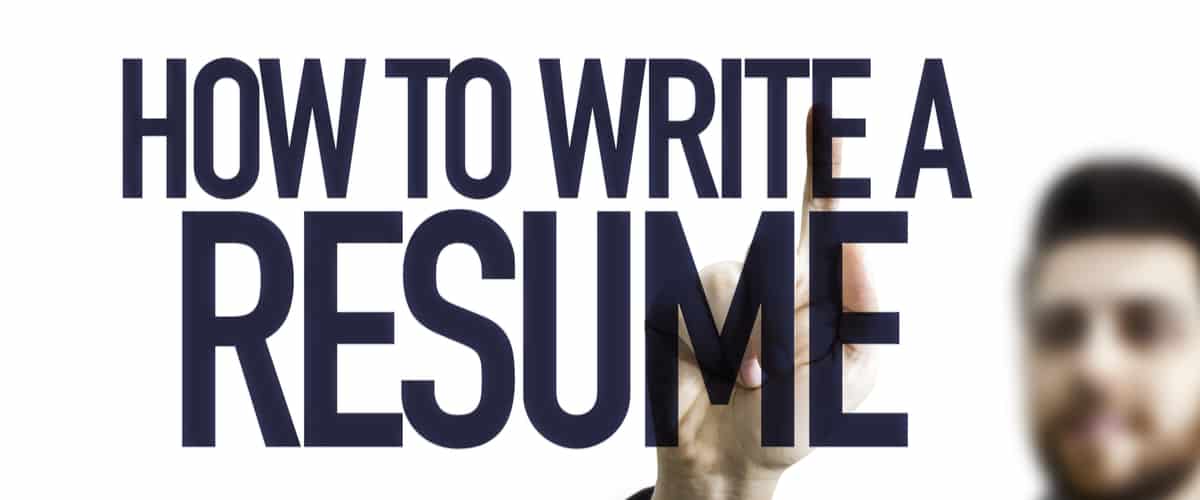
How To Write An Effective Resume
Did you know that 26% of hiring managers spend fewer than 30 seconds looking at a resume? And some experts say a rejection can take a mere 6 seconds.
Scary, isn’t it? How do they do that?
Think of your resume like a movie trailer. In just thirty seconds or less, you’ll make the decision whether to see the movie or not, right? And that’s all the time your resume has to get you an interview—or not.
By including the most essential elements in your resume—the important information recruiters are looking for—you’ll avoid that 6-second rejection. Make sure recruiters and hiring managers read your resume and put you on their interview list!
Step 1: Contact details
This is the easiest part for job seekers. Include your full name, email address, phone number, and LinkedIn URL. Be sure everything is professional.
On that note, this is the perfect time to check your social media accounts and make sure everything looks good. Raise your privacy settings and untag yourself from photos you would not want a future manager to see. Delete posts and pics that are too private or too political, and remove anything that might jeopardize your chances of an interview.
The same goes for anything nasty like uncivil arguing, excessive cursing, and anything negative that’s not welcome in any workplace. Remember, hiring managers and recruiters can and will Google you.
You can position your name on a separate line in a slightly larger, bold font so it stands out. The rest of the information goes just below it.
Step 2: Profile Summary (Skill Summary or Summary Statement)
Begin with a few well-worded sentences that show you’re the perfect candidate for the job. Show that you’re not only ambitious and hard-working, you also offer a range of hard and soft skills that will benefit the company.
Obviously, you won’t want to rewrite your resume for each job you apply to, and most of your resume should stay the same for each position anyway. But when you adapt your profile summary to a company’s job description, it works to your advantage. You’ll stand out from other candidates who use the exact same resume for every job, even if their profile summary doesn’t quite suit the position (though they have the required skills).
Step 3: Employment History
Begin with your most current job and list the company name and location as well as your title or position, and include the dates of employment (month/year). You can use a bold font for the company name or your position to make it stand out.
Next, describe your professional experience for each position and highlight your most important responsibilities. Use action verbs to describe measurable results and how you benefited the company.
“Implemented innovative marketing strategy and increased sales by 25%” or “Reduced waste to achieve 42% cost reduction” are examples of bullet points you might use. You were probably responsible for all sorts of tasks, but remember: You only have thirty seconds, at most, to make a good impression, so stick with what’s most important.
Sometimes it’s hard to measure outcomes, especially with soft skills like interpersonal communication, leadership, or a strong work ethic. How do you use those skills in a work environment? If you led effective brainstorming or problem-solving meetings, mention them. If you can’t demonstrate exactly how a soft skill benefits the company, skip it. A “strong work ethic” could just mean you get to work on time and work hard; it doesn’t make you stand out.
Step 4: Education and Training
Focus on your highest level of training, and don’t mention high school. Start with your most recent and work backwards. Here is the order:
Postgraduate degree
Master’s degree
Bachelor’s degree
Associate degree
Certificate(s)
List each degree separately with the official university name, the town or city, and state or country. Dates are optional. If you graduated 10 years ago, there’s no need to mention dates. Some experts say don’t mention dates 2-3 years after graduation, but it depends on your experience. New graduates need to list dates to explain why they have so little work experience.
Note: If credits earned from another institution are part of your degree requirements, list only the college or university that conferred the degree. An exception is a two-year associate degree that demonstrates specific skills you wouldn’t otherwise have. Radiology or physical therapy skills, for example, complement a four-year degree in nursing.
Be sure to include your major, minor, graduation honors (cum laude, magna cum laude, summa cum laude) and any awards you may have received. New graduates with GPAs over 3.0/4.0 can list them.
Step 5: Skills
List skills relevant to the job you’re applying for. Don’t mention personal interests or hobbies unless the skills required will benefit the company. Running, knitting, or cross-country skiing probably won’t get you an interview. But website design, ebook formatting, bookkeeping on spreadsheets and financial software, or mobile app development might be worth mentioning if they’re relevant and not listed under previous work experience.
Other valuable skills might include languages you speak or write fluently, travel, skill-related clubs you belong to, or anything that will demonstrate your value.
Step 6: References
In the United States, never list references on a resume. It was customary a few decades ago, but it’s just not done these days. And skip a statement like “References available on request,” since this is also outdated.
That said, you should prepare a separate list of at least three references with contact information. Use paper that matches your cover letter and resume, and provide this list, if asked, during an interview. Or you can refer to it when filling out paperwork for human resources (HR).
Choose people who know you and can speak well but fairly of you. Employers are looking for an honest evaluation, and they might be suspicious of anyone who’s overly complimentary. A respected professor or former manager is the best choice since they’ve seen you in action and know what you’re capable of.
No matter who you choose, be sure to include a job title or relationship to you, place of employment (or club, organization, etc.) and contact information for each reference. And make sure to ask permission! A professor might be on sabbatical, for example, and won’t be able to return an unexpected call. And surprising your references with a call from a stranger asking about you isn’t a good idea since they’ll want to be prepared.
Writing a resume can be challenging. It might be a little easier if you’ve done it before and have plenty of work history behind you. But what if you’re looking for an entry-level job? Read here for resume tips designed just for you.
If you follow these simple steps, you ‘ll be on your way to resume success. And now you’re ready to select a resume template from our collection and create a resume of your own!
The information on this site is provided as a courtesy. GradSiren is not a career or legal advisor and does not guarantee job interviews or offers.
Get expert career advice and insights delivered straight to your inbox.

Must Reads SEE ALL ARTICLES

Top 5 tips to design a good Cover Letter

Is an Infographic Resume Right for You?

How to Showcase your Technical Skills in a Resume to Stand-Out from the Rest

Resume Format for On-Campus Placements

Top 7 Skills to Highlight in Resume for Work from Home Jobs






